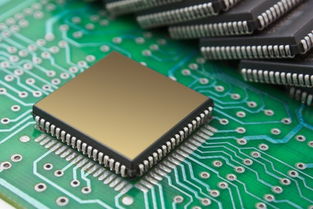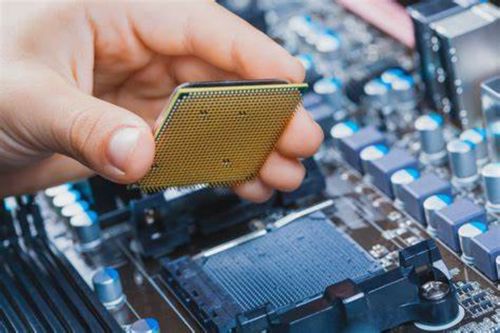
Nexperia
A Comparison of Storage Chip Categories: Choose the Right Storage Solution for You
In today's digital age, the demand for data storage is growing rapidly, and storage chips, as the core components of data storage, are of vital importance. From personal devices to enterprise applications, choosing the right storage chip is crucial for enhancing performance, reducing costs, and ensuring data security. This article will provide a detailed introduction to the advantages of current mainstream storage chip categories and help you choose the best storage solution for your needs.
I. Mainstream Storage Chip Categories and Their Advantages
-
DRAM (Dynamic Random Access Memory)
-
Advantages:
-
High-speed read and write: Suitable for frequent data read/write operations with fast response times.
-
Cost-effective: Lower unit storage cost, ideal for large-capacity needs.
-
-
Applications:
-
Main memory for computers and servers.
-
Game consoles, embedded systems, and other applications requiring large-capacity cache.
-
-
-
SRAM (Static Random Access Memory)
-
Advantages:
-
Ultra-fast read and write: Extremely short response times, suitable for high-speed caching.
-
Non-volatile: Data is retained even after power loss, ideal for critical data storage.
-
-
Applications:
-
CPU caches, routers, and other scenarios requiring extremely high speed.
-
-
-
NAND Flash
-
Advantages:
-
High storage density: Large storage capacity per unit area, ideal for large-capacity storage.
-
Non-volatile: Data is retained even after power loss, suitable for mobile devices.
-
-
Applications:
-
Solid-state drives (SSDs), USB flash drives, mobile phone storage, and other large-capacity storage devices.
-
-
-
NOR Flash
-
Advantages:
-
Fast read speeds: Suitable for directly executing stored code.
-
Non-volatile: Data is retained even after power loss, ideal for storing boot code.
-
-
Applications:
-
Storing boot code, microcontroller programs, and other similar uses.
-
-
-
TLC (Triple-Level Cell)
-
Advantages:
-
High storage density: Each storage unit holds 3 bits of information, offering low unit storage costs.
-
Cost-effective for large-capacity storage: High性价比, suitable for video storage and other large-capacity needs.
-
-
Applications:
-
Video storage, large-capacity needs for ordinary users.
-
-
-
MLC (Multi-Level Cell)
-
Advantages:
-
Balanced storage density and lifespan: Each storage unit holds 2 bits of information with a moderate lifespan.
-
Moderate cost: Suitable for a variety of application scenarios with moderate unit storage costs.
-
-
Applications:
-
Scenarios requiring higher storage density and relatively better performance and lifespan.
-
-
-
SLC (Single-Level Cell)
-
Advantages:
-
High-speed read and write: Each storage unit holds 1 bit of information, ensuring fast read/write speeds.
-
Long lifespan: High endurance for write/erase cycles, suitable for high-reliability, long-lifespan applications.
-
-
Applications:
-
Industrial control, high-end enterprise applications.
-
-
-
QLC (Quad-Level Cell)
-
Advantages:
-
Highest storage density: Each storage unit holds 4 bits of information with the lowest unit storage cost.
-
Ideal for large-scale storage: Suitable for large-scale storage needs such as data centers.
-
-
Applications:
-
Large-scale data center storage, cold storage.
-
-
II. Performance Comparison Summary
| Comparison Dimension | SLC | MLC | TLC | QLC |
|---|---|---|---|---|
| Read/Write Speed | Fastest | Faster | Medium | Slowest |
| Lifespan | Longest | Longer | Medium | Shortest |
| Storage Density | Lowest | Lower | Medium | Highest |
| Cost | Highest | Higher | Medium | Lowest |
III. Selection Recommendations
-
Ordinary Users: TLC offers the best cost-performance ratio, suitable for everyday use and large-capacity needs.
-
Professional Users: High-end TLC (such as those with independent cache) or enterprise-grade MLC, suitable for scenarios requiring higher performance and lifespan.
-
Enterprise Applications: 3D QLC for cold storage, SLC/MLC for high-frequency write and high-reliability needs.
IV. Conclusion
Choosing the right storage chip is crucial for enhancing device performance, reducing overall costs, and ensuring data security. Whether you are a personal user or an enterprise, understanding the advantages and application scenarios of different storage chip categories can help you make a wiser choice. We are committed to providing you with high-quality, high-performance storage chip solutions to meet your diverse needs.
Popular Communities

Main Application Fields of the ISO1050DUBR Driver

Analysis of Market Demand for Digital Isolator ADM2582EBRWZ

Technical Features of PMIC DC-DC Switching Regulator TPS54202DDCR

STM32F030K6T6: A High-Performance Core Component for Embedded Systems

Analyzing the Key Features of the STM32F407VGT6 Microcontroller